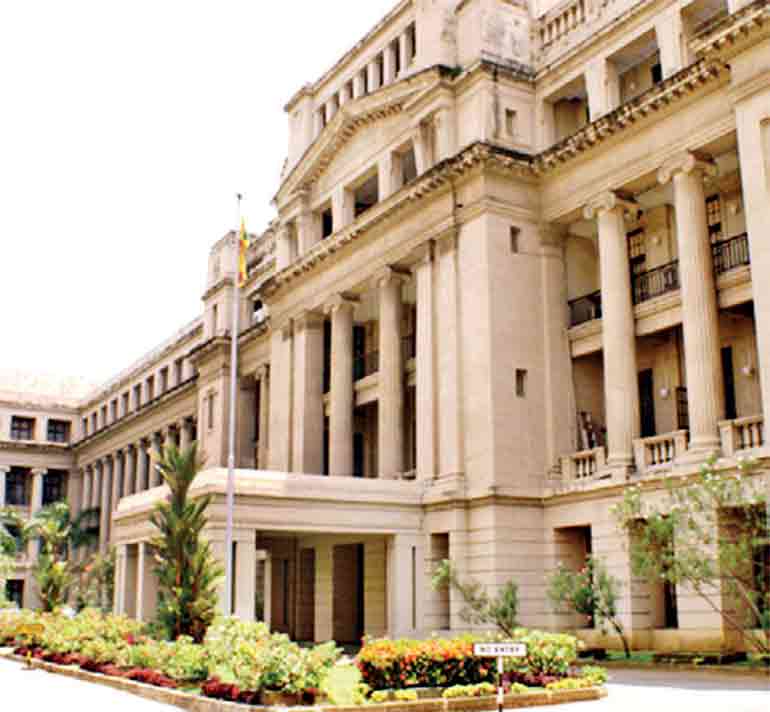Tuesday Nov 04, 2025
Tuesday Nov 04, 2025
Tuesday, 4 November 2025 05:41 - - {{hitsCtrl.values.hits}}

Sri Lanka’s foreign loan disbursements during the first half of 2025 amounted to $ 547.5 million, according to the latest Mid-Year Fiscal Position Report 2025 released by the Ministry of Finance on 31 October.
The report stated, “The largest share of disbursements was recorded under the International Monetary Fund's (IMF) Extended Fund Facility (EFF), accounting for 61% of the total. This was followed by disbursements under loan agreements with the World Bank (16%) and the Asian Development Bank (11%).”
In terms of sectoral allocation, the Finance Ministry noted that “the Budget Support sector accounted for the majority share, representing 65% of total disbursements, followed by the Humanitarian Assistance sector (7%) and the Water Supply and Sanitation sector (5%).”
The Government’s external debt as of end-June 2025 stood at $ 37.1 billion. Of this, 36% was multilateral debt, 34% commercial debt, and 30% bilateral debt.
“Approximately 81% of commercial debt comprised outstanding International Sovereign Bonds issuances, with the remainder consisting of foreign currency term financing facilities (syndicated loans),” the report said.
Among multilateral creditors, the Asian Development Bank and the World Bank together accounted for over 85% of total multilateral debt.
“With respect to bilateral debt, 59% was held by non-Paris Club creditors, while the remaining 41% was from Paris Club members,” the report stated.
Debt service payments from January to June 2025 amounted to $ 1,358.9 million, of which $ 863.6 million was for principal repayments and $ 495.3 million for interest payments.
The Finance Ministry also confirmed that as of end-June 2025, there were no external payment arrears.
The report clarified that external payment arrears are defined as debt-service obligations (principal and interest) to non-residents that have not been paid at the time they are due, as specified in the contractual agreements, subject to any applicable grace period.
It further explained that overdue debt and debt service obligations that are in dispute will not be considered as external payments arrears for the purposes of program monitoring and that arrears resulting from the non-payment of debt service, for which a rescheduling or restructuring agreement is being sought, are excluded from this definition.
According to think tank, Arutha Research, Sri Lanka does not face a looming debt servicing cliff when it resumes capital repayments of restructured foreign loans in 2028.
In 2028, Sri Lanka begins capital repayments on bilateral debt to Japan, EXIM Bank China, and EXIM Bank India, while bullet payments and maturities for macro-linked bonds (MLBs) are also scheduled to begin that year.
However, the repayments amount to an additional $ 1 billion compared to the $ 2 billion debt servicing requirements in 2026 and 2027 comprising interest payments and multilateral (ADB, World Bank) loan repayments.
The target given by the IMF in terms of the debt stock stability assessment is that Sri Lanka’s debt-to-GDP ratio has to come down below 95%. The current estimates place the ratio at 104.6% of GDP in 2024, with the IMF framework projecting a decline to 96.8% by 2030.
Arutha Research projects Sri Lanka could reach 85–87% of GDP by 2032, substantially better than the IMF forecast.
CBSL buys $ 1.4 b from domestic forex market YTD end-Sep.
The Central Bank of Sri Lanka (CBSL) continued to be a net buyer of US dollars from the domestic market for the 14th consecutive month in excess of the amount sold in the market, First Capital Research said in a recent report.
It said that year-to-date end-September 2025, the CBSL had purchased over $ 1.4 billion from the domestic market to build reserves, which stood at $ 6.2 billion.
The domestic US dollar purchases were supported by Sri Lanka sustaining monthly external sector current account surpluses since January 2025, a trend which ended in September with the first deficit for the year on surging vehicle imports.